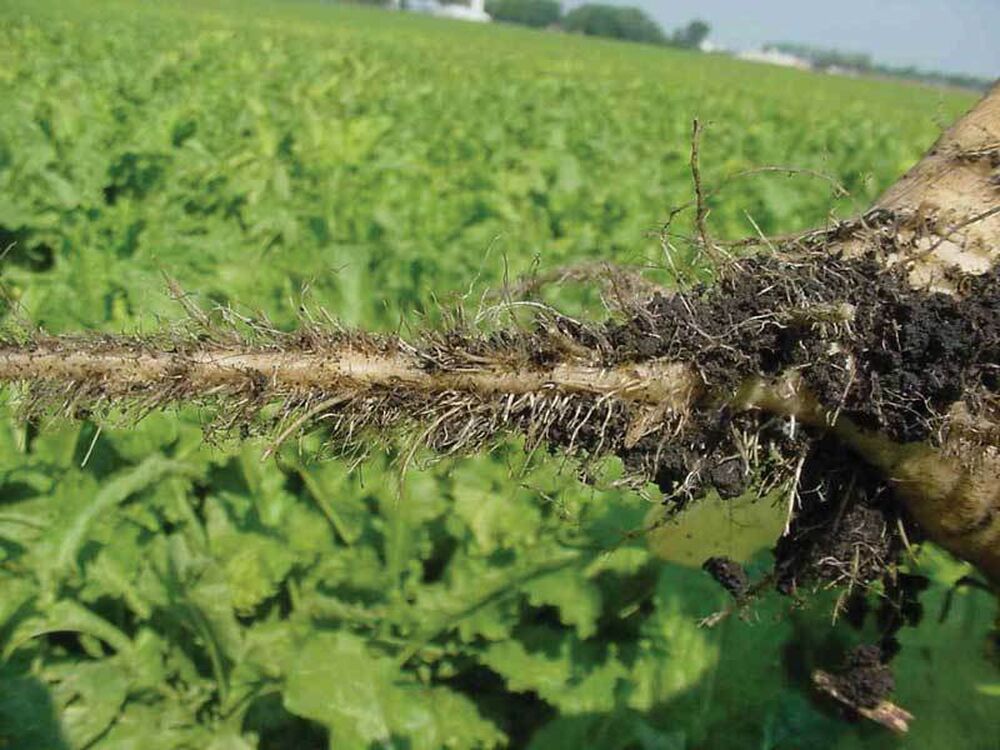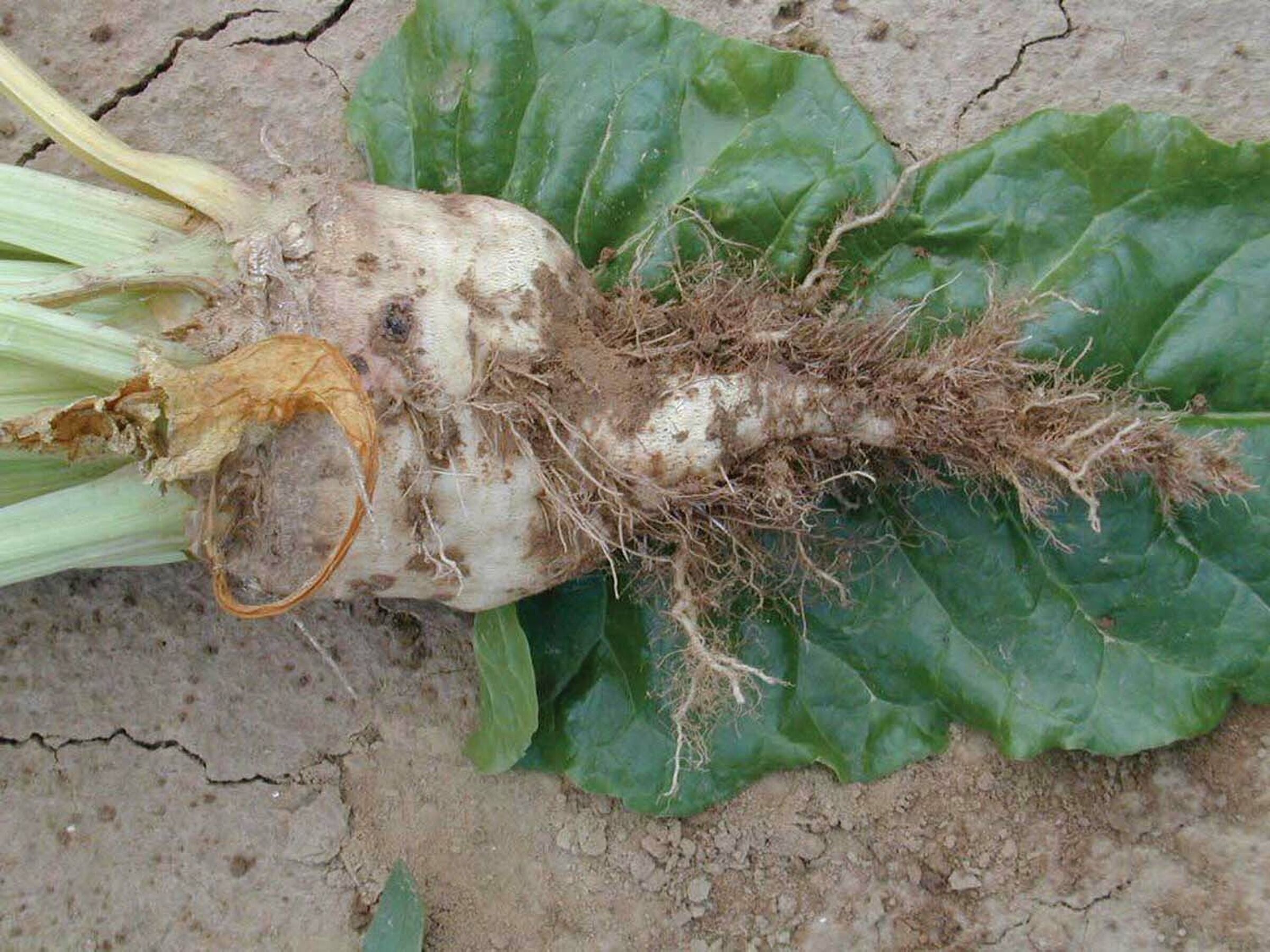Rhizomania is one of the most common sugar beet diseases. It is caused by the Beet necrotic yellow vein virus, which is transmitted to sugar beet by a rootlet parasite (Polymyxa betae). It causes an anarchical proliferation - an abnormal and uncontrollable growth - of root hairs at the expense of the taproot, which can lead to major losses in sugar yield.
What are the symptoms of rhizomania in sugar beets?
Rhizomania often appears in patches across the field.
Foliage symptoms of rhizomania in sugar beet:
- From June onwards: wilting, particularly during the hottest hours of the day
- Towards the end of summer: pale green foliage
- New leaves are narrow, with long, upright leaf stalks
- Very occasionally: yellowing and necrosis of the leaf veins
Root symptoms of rhizomania in sugar beet (towards the end of the growing season):
- Girdling of the lower part of the root
- Development of dense, dark root hairs at the expense of the taproot
- Browning and necrosis of the vascular rings inside the root
- Occasionally: development of perpendicular lateral roots
Depending on the sensitivity of the variety, the level of inoculum in the soil, virus strain, climate conditions (the disease is favoured by warm, humid weather) and timing of infection, rhizomania can cause extremely serious damage — including reduced sugar content, yield loss, increased soil tare, and reduced extractability.
Occasionally, individual symptomatic plants with fluorescent yellow foliage can be spotted in a field of asymptomatic rhizomania-resistant plants. These are referred to as ‘blinkers’.

Rhizomania, a widespread disease
Rhizomania was first observed in the 1950s in northern Italy. It spread rapidly across Europe and eventually worldwide. The severity of the damage and lack of control methods led to concerns that sugar beet cultivation might have to be abandoned in the worst-affected regions.
In the early 1980s, the first rhizomania-resistant variety was introduced by SES: RIZOR. This variety helped save sugar beet production in impacted areas.
By 2008, rhizomania-tolerant varieties had caught up in sugar yield (tonnes/ha) with non-tolerant types. As a result, many countries now sow only rhizomania-tolerant varieties. Today, rhizomania is present globally. In Europe, almost all sugar beet growing regions are affected.
How can rhizomania be controlled?
Currently, there is no chemical treatment for rhizomania. The only effective way to manage the disease is to grow sugar beet varieties that have a resistance to the disease. It is also advisable to implement good agronomic practices, such as:
- Proper drainage
- Maintaining good soil structure
- Minimal irrigation
- Avoiding unnecessary soil movement
- …

